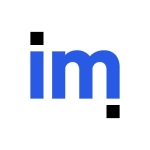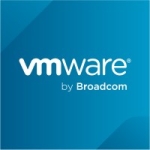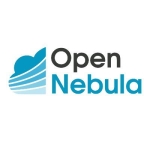What is our primary use case?
We use Nutanix Prism Pro for central management. We have three clusters and we manage them with Prism Pro. We use it as a central point of managing Nutanix, it's concentrated on Prism Pro's dashboard. Our strategy is to only have one tool to manage our clusters and Prism.
How has it helped my organization?
You can see the health status of the clusters in one view. There is one view of the health of your systems which helps you to have an overview any time you have a problem. You can dig into the tools that Prism Pro has to give you all the options to take on the problem. You can monitor things and manage the cluster really easily.
What is most valuable?
It's very easy to understand. The interface is very clear.
We plan to use the solution's X-play or Cross-play automation features. This is in contract. We moved to Nutanix and we have a lot to do. For now, we are more concentrated on blueprints but we plan to have a look at these features.
What needs improvement?
We have a lot of projects so we cannot always dive deep into the material that Nutanix offers. We would like to but we have other priorities. It was a busy year. We have an external company that does things for us so we can make the process go faster. We know what we need and what we would like to achieve. I'm still on the learning curve. I think Prism Pro is very good and straightforward.
For how long have I used the solution?
I have been using Nutanix Prism Pro for a year and a half.
What do I think about the stability of the solution?
The stability is very good. I cannot say that we have had an issue with the Prism Central dashboard.
What do I think about the scalability of the solution?
Scalability is very technical now. I think you can install a second instance.
We are three people that work with Prism Central and they're all in service core IT. It's the people from the infrastructure.
We have an external partner that does the maintenance. We will be getting it handed over to us, but until now this external company does all of the maintenance and upgrades. They announce that there is a new upgrade, we plan when we can do it, and then we participate.
We are still in the learning curve and we need really a company that has a lot of experience because it's mission-critical. We have systems that are very mission-critical. We really should be sure that we have people that really know what to do. When we are over the learning curve, then maybe we can take it over. For now, we give all of this stuff to an external company.
We don't use Nutanix as a self-service platform. In our IT, we manage Central so it's not that we use it like many other companies. Like a company that can say "Okay. This department can create the resources that I need" themselves. Now, it all comes into the Central place and we do that. It's still in this little team. Only these core IT people have contact with the Nutanix dashboards.
We have blueprints in the Marketplace but it's not a goal that we made for other people. When a service asks for resources, they communicate to us what they need and we create it with this. When they have a project and they need some new software, they tell us, "Okay. We need this database, those application servers," and then we set up it for them.
How are customer service and support?
We had some issues so we contacted their support. They're great. When you compare to other companies, their support is really great.
Which solution did I use previously and why did I switch?
This is the first hyperconverged system that we have had. Before, we had XenServer. It is a virtualization framework like VMware. We also used templates. The goal of Nutanix is to have a central place to manage all the network storage. We are still using Virtualization Framework, which is good. We are still doing the migration, but for that, you must have knowledge about SAN management, like SanDisk. This infrastructure has a different discipline and different tools to manage the clusters. Nutanix has one starting point where you can manage all this stuff with one software. So it's a paradigm shift. It's easier. Sometimes SAN can be complex because you need special hardware switches for a SAN connection to the disc system.
With Nutanix, you can grow with your needs. If we need more storage or CPU, we add a node so we get both, we have the storage and the CPU power. The good thing about hyperconverged systems is that you can grow as your needs come.
How was the initial setup?
The initial setup was straightforward. It's a one-click installation. You have to set up the VM with one click. It's very easy. It's not complex to have this dashboard. It's a one-click installation. The setup took five to ten minutes.
You click to install Prism Central and then you create a VM and start-up the VM. There is a dashboard that goes over more than one cluster. You don't need to have a background for that. It's a one-click thing.
We planned from the beginning to use Prism Central. When we started with Nutanix, we began with a multicluster system. When you have a multicluster system, you need Prism Central. Then you can manage cluster by cluster. Other than that, you have only Prism Element and that makes no sense. It was clear that we should have Prism Pro.
What was our ROI?
We see ROI because Nutanix enables us to reduce our hardware footprint. We had a lot more nodes. We don't need SAN anymore. We reduced this need to make a point to save money.
We reduced by 22 nodes. We reduced the hardware so we have cost-saving. With hardware, you need to buy it again every five years and pay for support. We had some nodes for more than five years, and today the new machine has more power. It's hard to compare sometimes.
With Nutanix, we don't really use old hardware. We buy new hardware that's fast because every year the hardware gets faster. If we move the same load to the new hardware, we don't need so much hardware anymore because the machine itself is more powerful. The fact you can reduce and grow as the need comes saves money.
What's my experience with pricing, setup cost, and licensing?
When we calculate all that we needed before, I think Nutanix is cheap. When you take into account that you need a SAN and all that stuff and you know you can grow as the needs comes in, I think you can save money. With the analytics from Prism where you can see that you have oversized or you can predict how it will grow, you can really react in a timeframe that you also have time to buy the hardware. I think you can save money when you compare to before Nutanix.
What other advice do I have?
My advice would be to go for it.
It has fulfilled our hopes. We have been doing virtualization for long enough and we see what the pitfalls are. Nutanix gives us a centralized, easier to manage platform.
We bought a little cluster for the proof of concept and we saw really quickly that this solution is the right way to go. Now, we're focusing on a strategy to replace all the other stuff and to go with Nutanix straight ahead. We plan to use the file cluster but for now, we have a separate file cluster. We prefer to use Era. It's a database central management tool from Nutanix.
I would rate Nutanix Prism Pro a nine out of ten.
Which deployment model are you using for this solution?
On-premises
Disclosure: PeerSpot contacted the reviewer to collect the review and to validate authenticity. The reviewer was referred by the vendor, but the review is not subject to editing or approval by the vendor.
















